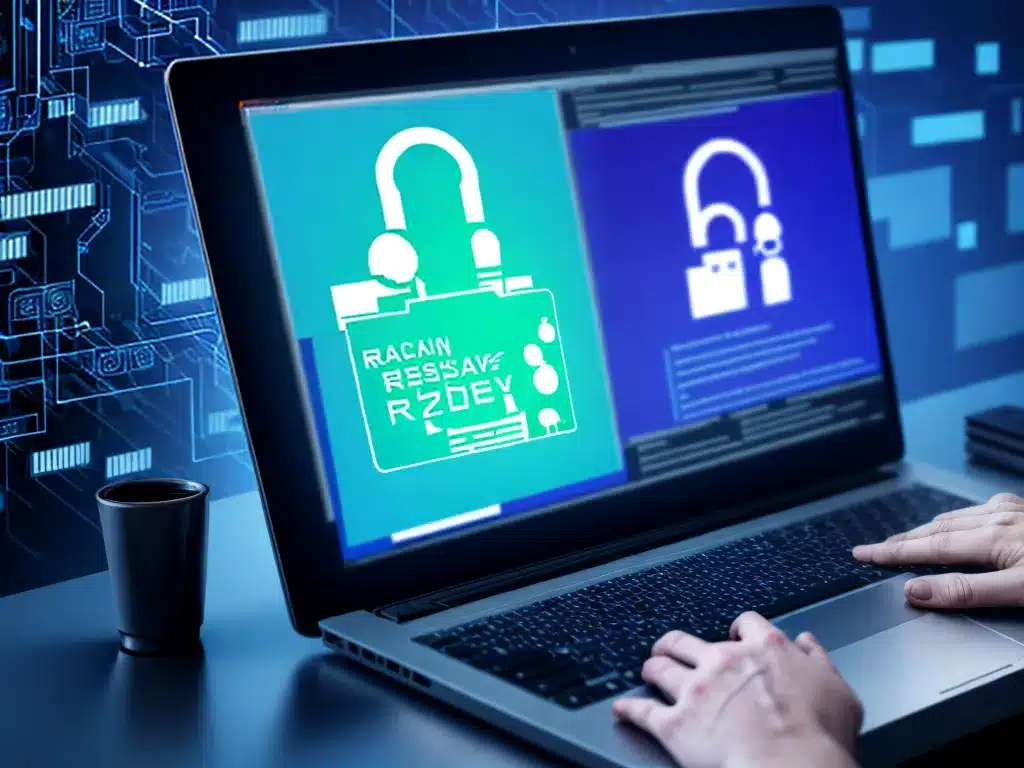Introduction
Ransomware continues to be one of the most significant cybersecurity threats facing organizations in 2024. As a business leader, it is critical that you have a comprehensive and tested ransomware response plan in place to minimize damage when (not if) your organization suffers a ransomware attack. In this article, I will provide an in-depth look at ransomware response planning best practices to help you prepare your organization for success in responding to and recovering from a ransomware event.
Understanding the Ransomware Threat Landscape
To develop an effective response plan, you first need to understand the ransomware threat landscape. Here are some key factors to be aware of:
-
Increasingly sophisticated tactics – The criminals behind ransomware are using more advanced methods like multi-stage attacks, data exfiltration, and DDoS attacks to put maximum pressure on victims.
-
Ransom demands growing – The average ransom payment increased dramatically in 2022 to over $800,000. With stronger encryption, criminals can demand higher sums.
-
Triple extortion – Many ransomware groups now steal data before encrypting networks and threaten to publish sensitive data if the ransom isn’t paid.
-
Critical infrastructure targeting – Healthcare, energy companies, government agencies and other critical infrastructure are prime targets.
-
Affiliate structure – Ransomware developers lease their malware to affiliates who then carry out attacks. This decentralized model makes ransomware much harder to combat.
Clearly, ransomware presents a severe threat to businesses that needs to be met with robust preparation.
Building a Ransomware Response Plan
Your ransomware response plan should cover all aspects of dealing with an attack including preparation, detection, containment, remediation, communication, and process improvements. Here are key elements your plan should include:
Preparation
-
Backups – Maintain regularly updated backups offline and immutable to recover encrypted data without paying the ransom. Test restoring from backups regularly.
-
Incident response team – Designate key staff roles for responding to ransomware attacks like technical leads, business continuity planning, communications, legal and cyber insurance. Conduct tabletop exercises to practice response plan.
-
Network segmentation – Segment your network, limit admin privileges and use firewalls to prevent ransomware from spreading across your entire environment if breached.
-
End user security training – Train staff to recognize suspicious emails and cyber hygiene best practices to avoid falling victim to ransomware.
Detection & Analysis
-
IDS/IPS – Use intrusion detection and prevention systems to quickly detect ransomware network activity and alert your team.
-
Analytics – Employ user behavior analytics to spot abnormal access patterns that could indicate ransomware.
-
Host monitoring – Monitor hosts for suspicious file encryption activity, service shutdowns and other signs of ransomware behavior.
-
Forensics – If ransomware is detected, perform forensic analysis to determine scope of compromise, variant identified and potential weaknesses exploited.
Containment & Eradication
-
Isolate – Immediately isolate impacted systems to prevent further spread of ransomware across network.
-
Shut down – Strategically shut down infected systems and services without locking out ability to recover data.
-
Wipe malware – Wipe ransomware from endpoints and reset accounts compromised by attackers.
-
Close vulnerabilities – Address any vulnerabilities in your environment exploited by the ransomware.
Recovery
-
Restore from backups – To avoid paying ransom, wipe impacted systems and restore data from unencrypted backups.
-
Decryption tools – For some ransomware strains, decryption tools are available that may help recover data without paying.
-
Ransom negotiation – As a last resort if backups are unavailable, negotiate with threat actors via ransomware response firms.
Communications
-
Public relations – For highly disruptive attacks, engage PR support to shape media messaging and protect brand reputation.
-
Notifications – Notify employees, customers, investors and other stakeholders with regular updates during the response process.
-
Law enforcement – Contact law enforcement and cybersecurity agencies like the FBI and CISA to report the attack.
Post-Incident Improvements
-
Lessons learned – Conduct a lessons learned evaluation of your response to strengthen capabilities before the next incident.
-
Infrastructure hardening – Identify and correct any vulnerabilities or gaps in your infrastructure’s security.
-
Review 3rd parties – Review security measures of key suppliers and business partners that may have been affected.
-
Insurance claims – For covered losses, work with your insurer to quantify damages and file claims.
Key Takeaways
Responding effectively to ransomware requires extensive preparation and testing. By investing in backup systems, network segmentation, staff training, and clear incident response plans, businesses can minimize disruption and avoid costly ransom payments. With strong security controls and response capabilities in place before an attack occurs, organizations can rapidly contain the incident, restore operations and emerge stronger than before.












